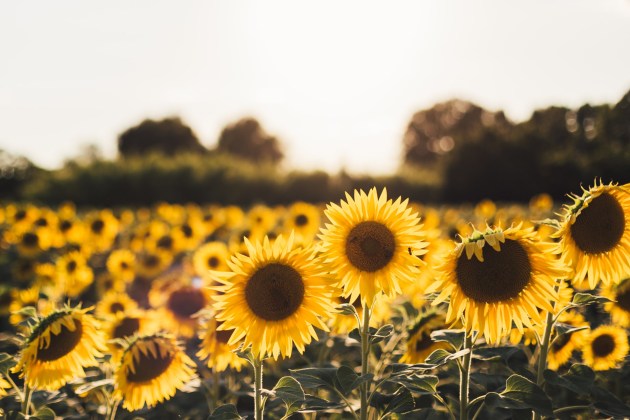5th January 2022. Today starts the beginning of Purpose #3
YOU WERE CREATED TO BECOME LIKE CHRIST
"Let your roots grow down into Christ and draw up nourishment from Him, See that you go on growing in the Lord, and become strong and vigorous in the truth...Colossians 2:7"
I love this purpose for my life. Lately this has been the theme. "Let your roots grow down in Chirst" I always said that I associated my life with a garden. And my favourite flower are the Daisy and Sunflower. I love the sunflower because I associate it with my boys... Vincent & Thomas.
The sunflower roots grow deep in the soil because they are tall and big (just like the boys)
I just google there to see about the roots of the sunflower but I found a picture of the circular life of a Sunflower seed. This is the site I found
twinkl.co.net.co.uk/teaching-wiki/sunflower-life-cycle
and it explains it all. I laughed our loud at one point. My favourite flower is the daisy and it said "That the sunflower belongs to the colourful Asteraceae, or DAISY FAMILY.
Sunflower Life Cycle

What are sunflowers?
Renowned for their tall stems and bright golden blossoms, sunflowers are the largest flowering plants known to man. They belong to the colorful Asteraceae, or Daisy family, and are a firm favorite with gardeners and non-gardeners alike.
Native to Mexico and the southern United States, sunflowers have large round faces and vibrant petals. And although we tend to associate sunflowers with the color yellow, they come in many other colors too, including orange, peach, red, pink, and purple.
Seed to harvest: The stages of the sunflower life cycle
The sunflower life cycle consists of many stages. First, a seed is planted in the soil. Then, after a couple of weeks, the first green shoots of a young sunflower will rise up from the ground.
Slowly but surely, the tiny plant will grow leaves, a bud, and eventually - after roughly three months - a golden flower. But that’s not the end of the sunflower’s story, not by a long shot.
Let’s take a look at the sunflower life cycle in a bit more detail, and discover what happens after a sunflower blooms...
Seed
One day.
The sunflower life cycle begins with a seed.
Germination
One week after planting.
Soon after they’re planted, sunflower seeds start absorbing moisture through their shells. As they soak up more and more water, their shells begin to crack open, as they’re unable to contain the extra moisture. The sunflower’s roots emerge first - their role is to stabilize the plant and absorb vital nutrients from the soil.
Seedling
Two to five weeks after planting.
Once the roots have absorbed plenty of water, a small shoot will make its way out of the ground. This tiny plant - known as a “seedling” - is made up of a thin stem and two leaves.
During this stage, as the stem grows taller and taller, the plant will grow many more leaves. The fledgling sunflower uses its leaves to absorb sunlight, which it turns into food via photosynthesis.
Seedlings are extremely vulnerable to environmental factors, such as extreme temperatures (high and low), lack of water, and insects.
Bud
Five to 10 weeks after planting.
Also known as the “reproductive phase,” this stage is when a small bud develops at the tip of the stem. At first, the bud will be closed, but over time it will open up to display the bright golden petals within.
Did you know that, during the reproductive phase, sunflowers physically move towards sunlight? It’s true - as the sun drifts across the sky, sunflowers will change position to make sure they’re getting as much sunlight as possible. This behavior - known as heliotropism - is how sunflowers got their name.
Full bloom
10 to 13 weeks after planting.
After two to three months, sunflowers begin to flower. Typically, sunflowers stay in bloom for three weeks, but you might get a full month if you’re lucky.
At this stage, sunflowers are like a shining beacon for bees, butterflies, beetles, and a whole host of other pint-sized pollinators. Attracted by the vibrant petals, these insects come to drink nectar from the center of the sunflower.
In the process, their furry bodies pick up pollen from the male part of the plant (known as anthers), which they carry to the next plant. There, the bees deposit the pollen onto the female parts of the flower (known as stigma), which fertilizes the plant and ensures that it’ll produce fruit and seeds in the future.
Wilt
13 to 15 weeks after planting.
All good things must come to an end. At 13 to 15 weeks, the petals turn from bright yellow to rusty brown, and the head of the sunflower starts to droop.
Regeneration, or harvest
15 to 17 weeks after planting.
During the regeneration (or reproduction) stage, the sunflower withers completely, shedding its seeds on the soil below. Some will embed themselves in the ground, some will scatter on the breeze, while others will be eaten by birds and squirrels. This process - known as seed dispersal - allows the sunflower life cycle to begin all over again.



No comments:
Post a Comment